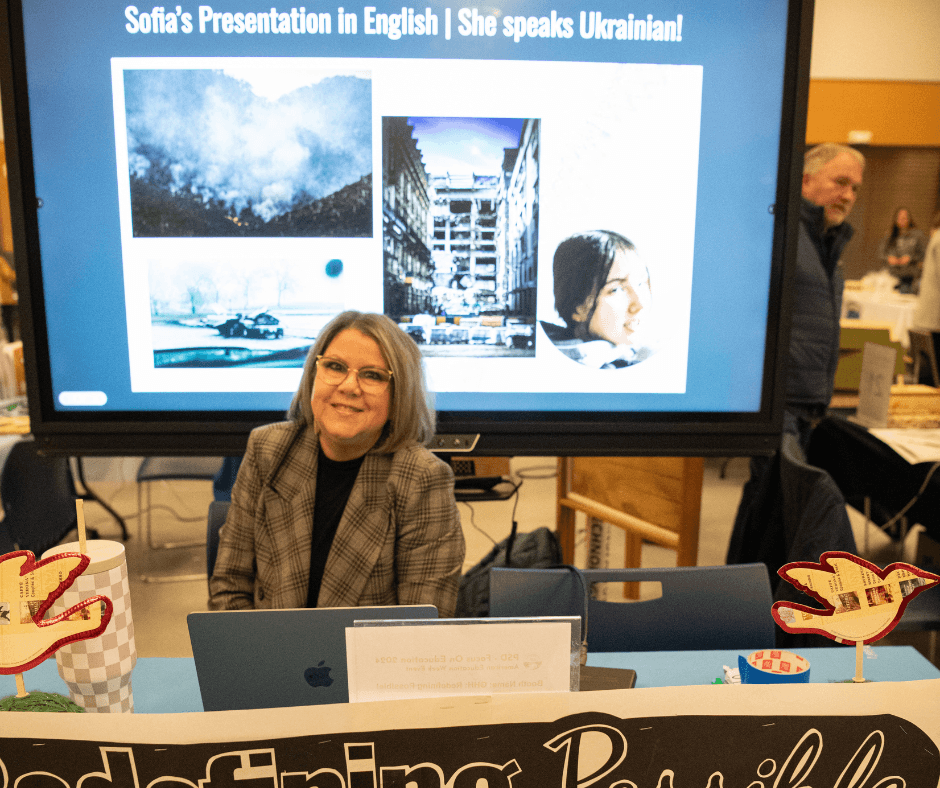Breaking Down Language Barriers: How AI Can Give Every Student a Voice

In Karen Kennedy Floyd’s English classroom at Gig Harbor High School (GHHS), technology is overcoming a language barrier and letting all students shine. With over 40 years of teaching experience, Floyd has witnessed the evolution of ed-tech from “no computers” to today’s AI-powered tools. But, it’s her recent experience with a Ukrainian-speaking student that demonstrates how AI can transform classroom inclusion.
Putting Multilingual Students on Center Stage
When Sofia K., a student at GHHS, was assigned to a team for a class TED Talk presentation, Floyd faced a challenge — she knew Sofia had the knowledge and creativity to contribute, but she didn’t speak English. Rather than letting language be an immovable obstacle, Floyd turned to HeyGen, an AI-powered avatar tool.
“She did all the research, she made all the slides,” Floyd said. “Her avatar was up there on the big screen, speaking in English, doing her presentation. It gave her a voice in the classroom.”
Sofia took an active role in the project. Her breakthrough came when Floyd and Sofia used HeyGen to create custom video avatars that copy their likeness and are able to translate their speech.
The success of the TED talk presentation inspired Floyd to expand the use of HeyGen AI for daily classroom communication. She now creates short instructional videos that can be translated into multiple languages, ensuring all of her students understand the material.
“My goal is always to communicate with all my students,” Floyd said. “I’ve got a couple students that don’t speak English, and I’ve been able to use this tool to communicate with them.”
This approach has transformed Floyd’s classroom into a more inclusive space that gives more opportunities for student participation.
Embracing Change with Purpose
Like many English teachers, Floyd acknowledges the complexities of incorporating AI into education, particularly the threat of plagiarism.
“The use of AI in writing and creating things is growing. It’s the next thing, and it’s scary,” she said.
However, she emphasizes that successful AI use requires strong foundational skills. “Kids can’t write well with AI unless they can write well themselves,” she said. “They have to know how to program it. We as teachers need to make sure that we teach them the basics, and then also make sure that we teach them ethical use of all of the tools that are out there.”
Despite being the self-described “oldest teacher at [GHHS]”, Floyd approaches new technology with determination and openness.
“It doesn’t come naturally to me, it’s not intuitive, but I’m willing to learn and to work,” Floyd said. “I always feel like at any school I’m at where I’m trying something new, I feel like, if I can do it, anyone can do it.”
Floyd knows that like any new tool, AI has come with its own set of challenges and opportunities. She worries about students “living in the shallows” and believes it’s an educator’s responsibility to encourage students to engage deeper with their learning. Also, she recognizes that staying current with technology is crucial for reaching students effectively.
“We have to keep up with what they’re doing,” Floyd said. “They’re going to be on their phones. They’re going to be doing all the things that are distractions to us, but we have to find out how they can be used well and wisely.”
Her use of HeyGen is a great example of how AI tools, if used thoughtfully, can create engaging, inclusive learning environments where every student has the chance to participate fully in their education. It’s a powerful reminder that technology’s greatest value in education is not to replace, but to work in collaboration with classic teaching tools.